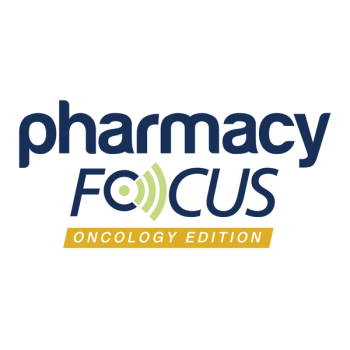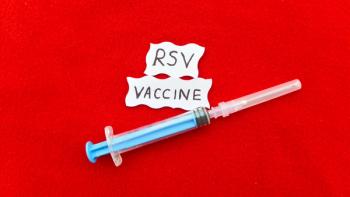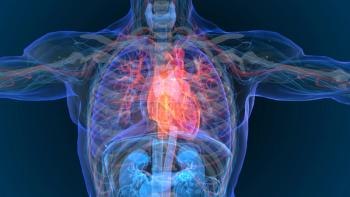
Anitocabtagene Autoleucel Yields Overall Response Rate of 97% in Patients With Multiple Myeloma
Key Takeaways
- Anito-cel achieved a 97% overall response rate and 93.3% MRD negativity in RRMM patients, indicating significant efficacy.
- The phase 2 trial included heavily pretreated patients, with 86% triple refractory and 41% penta refractory.
The data are from the phase 2 iMMagine-1 study.
Anitocabtagene autoleucel (anito-cel; Arcellx, Inc) demonstrated significant response rates and minimal residual disease (MRD) negativity in patients with relapsed or refractory multiple myeloma (RRMM). The data from the phase 2 iMMagine-1 trial (NCT05396885) are to be presented at the European Hematology Association 2025 Congress.1
MM is a heterogeneous hematologic malignancy characterized by the overproduction of monoclonal proteins, leading to complications such as renal failure, organ damage, and brittle bones. Despite significant treatment advances, patients with MM inevitably relapse and experience worse responses with each subsequent treatment.2
BCMA is one of the most common mutations identified on the surface of MM cells, which led to the novel development of BCMA-targeting therapies, such as ciltacabtagene autoleucel (cilta-cel, Carvykti; Janssen Biotech, Inc) and idecabtagene vicleucel (ide-cel, Abecma; Bristol Myers Squibb). In the phase 2 iMMagine-1 trial, investigators explored the potential role of anito-cel, another BCMA-targeting chimeric antigen receptor (CAR) T-cell therapy, in the MM treatment landscape.2,3
Results from phase 1 showed the clinically meaningful capabilities of anito-cel, which demonstrated significant improvements in overall response rates (ORR) and MRD negativity. There were also notable reductions in cases of cytokine release syndrome (CRS); 79% of the trial participants had no CRS or grade 1 CRS. The phase 2 data build on these results and further validates the safety and efficacy of anito-cel.3
The open-label phase 2 trial included 117 triple-class-exposed patients equal to or over the age of 18 (median age 66 years; range 38 to 77) with RRMM who progressed after greater than or equal to 3 prior lines of therapy (LoT) with measurable disease and were refractory to their last LoT. Eighty-six percent of the population was triple refractory, and 41% were penta refractory. All of the patients received lymphodepletion chemotherapy of fludarabine at a dosage of 30 mg/m²/d and cyclophosphamide at 300 mg/m²/d for 3 days, followed by a single infusion of anito-cel (target dose of 115×10⁶ CAR+ viable T cells).3,4
The primary end point of the study is ORR, which is inclusive of stringent complete response (sCR), complete response (CR), very good partial response (VGPR), and partial response (PR). The American Society for Transplantation and Cellular Therapy consensus criteria were used to grade CRS and immune effector cell-associated neurotoxicity syndrome (ICANS), the 2016 International Myeloma Working Group (IMWG) criteria were used to evaluate efficacy outcomes, and next-generation sequencing was used to evaluate MRD (sensitivity threshold, 10 to 5).3,4
At the median follow-up of 12.6 months, the ORR was 97% with CR and sCR rates of 68%, as well as a VGPR or higher rate of 85%. Among patients evaluable for MRD, 93.3% achieved MRD negativity at a sensitivity threshold of at least 10⁻⁵. Progression-free survival (PFS) and overall survival (OS) rates at 6 months were 91.9% and 96.6%, respectively. At 12 months, PFS was 78.8% and OS was 95.2%.4
Anito-cel demonstrated favorable safety with no associations with any delayed or non-ICANS, such as Parkinsonism, cranial nerve palsies, Guillain-Barré syndrome, or immune-mediated enterocolitis. As of December 2024, there have been no additional therapy-related deaths and no new cases of CRS or ICANS with a grade greater than or equal to 3 reported.4
The findings of the trial demonstrate the favorability, efficacy, and safety of anito-cel for the treatment of patients with RRMM who continue to progress after multiple LoT. The investigators will be collecting more robust safety data under a separate long-term follow-up study.
REFERENCES
1. Study of anitocabtagene-autoleucel in relapsed or refractory multiple myeloma (iMMagine-1) (iMMagine-1). Updated April 15, 2024. Accessed May 14, 2025. https://clinicaltrials.gov/study/NCT05396885
2. Ciltacabtagene autoleucel demonstrates superior progression-free survival in patients with relapsed, refractory multiple myeloma. Pharmacy Times. January 21, 2025. Accessed May 14, 2025. https://www.pharmacytimes.com/view/ciltacabtagene-autoleucel-demonstrates-superior-progression-free-survival-in-patients-with-relapsed-refractory-multiple-myeloma
3. Freeman C, Dhakal B, Kuar G, et al. Phase 2 registrational study of anitocabtagene autoleucel for the treatment of patients with relapsed and/or refractory multiple myeloma: preliminary results from the IMMagine-1 trial. Blood. November 5, 2024. Doi:10.1182/blood-2024-198499
4. Arcellx announces new positive data for its iMMagine-1 study in patients with relapsed and/or refractory multiple myeloma. Business Wire. May 14, 2025. Accessed May 14, 2025. https://www.businesswire.com/news/home/20250513572727/en/Arcellx-Announces-New-Positive-Data-for-Its-iMMagine-1-Study-in-Patients-with-Relapsed-andor-Refractory-Multiple-Myeloma
Newsletter
Stay informed on drug updates, treatment guidelines, and pharmacy practice trends—subscribe to Pharmacy Times for weekly clinical insights.




















































































































































































































